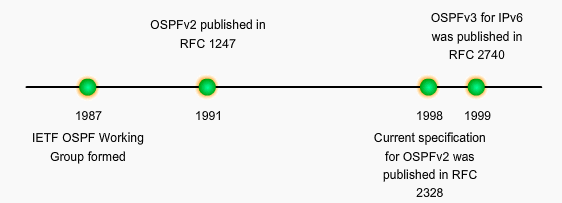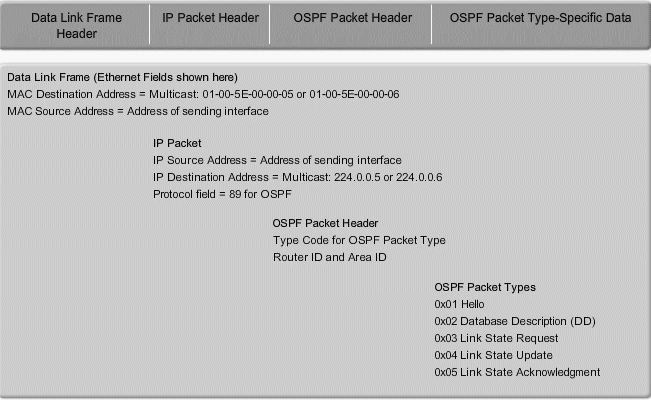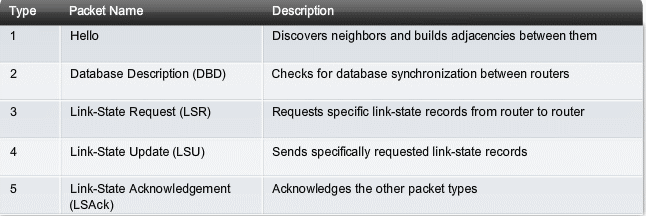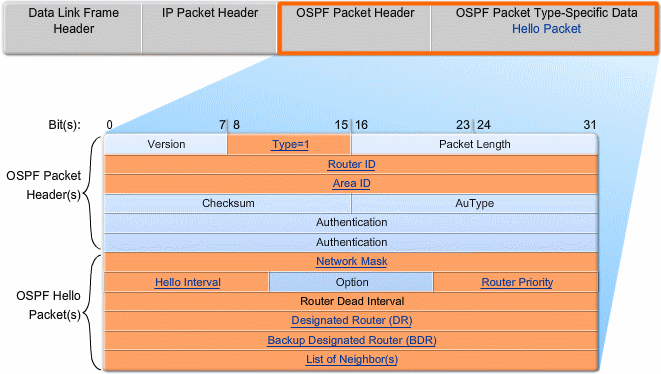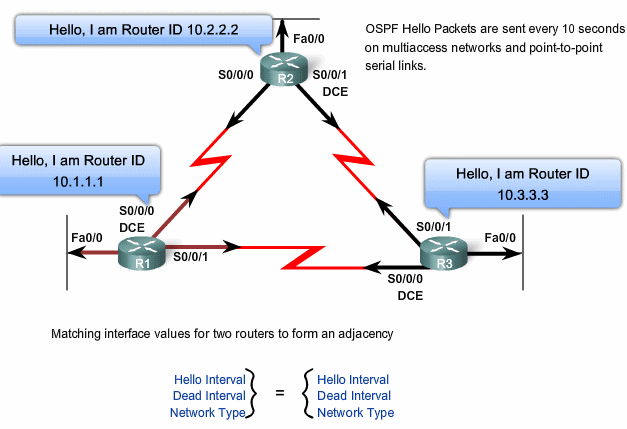CCNA Explorer semester 2 kapitel 11
OSPF Pakketyper
1. Hello - Hello packets are used to establish and maintain adjacency with other OSPF routers. The hello protocol is discussed in detail in the next topic.
2. DBD - The Database Description (DBD) packet contains an abbreviated list of the sending router's link-state database and is used by receiving routers to check against the local link-state database.
3. LSR - Receiving routers can then request more information about any entry in the DBD by sending a Link-State Request (LSR).
4. LSU - Link-State Update (LSU) packets are used to reply to LSRs as well as to announce new information. LSUs contain seven different types of Link-State Advertisements (LSAs). LSUs and LSAs are briefly discussed in a later topic.
5. LSAck - When an LSU is received, the router sends a Link-State Acknowledgement (LSAck) to confirm receipt of the LSU.
HELLO protocol
- Type: OSPF Packet Type: Hello (1), DD (2), LS Request (3), LS Update (4), LS ACK (5)
- Router ID: ID of the originating router
- Area ID: area from which the packet originated
- Network Mask: Subnet mask associated with the sending interface
- Hello Interval: number of seconds between the sending router's hellos
- Router Priority: Used in DR/BDR election (discussed later)
- Designated Router (DR): Router ID of the DR, if any
- Backup Designated Router (BDR): Router ID of the BDR, if any
- List of Neighbors: lists the OSPF Router ID of the neighboring router(s)
Mismatch OSPF timere
Hvis HELLO interval og DEAD interval ikke er ens på naboerne kan der ikke laves et adjacencie.
